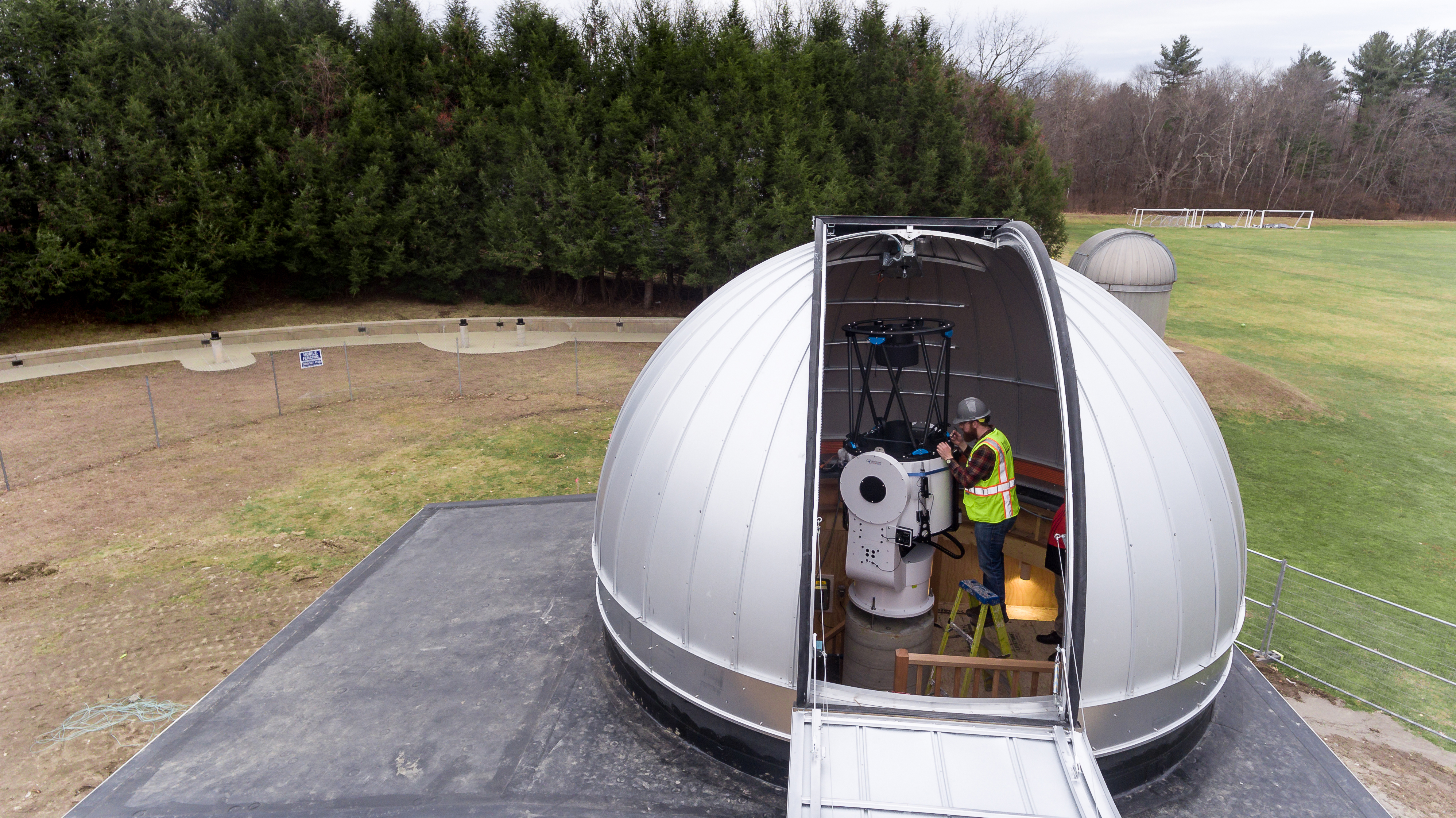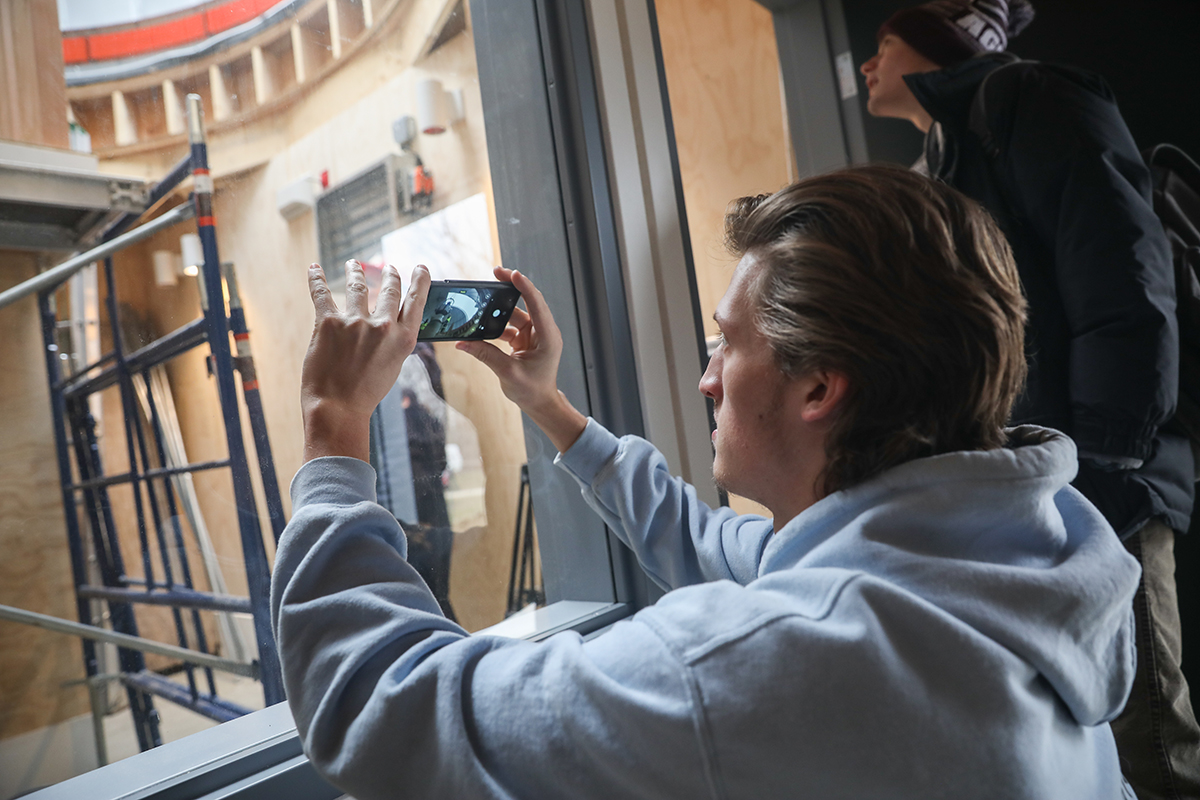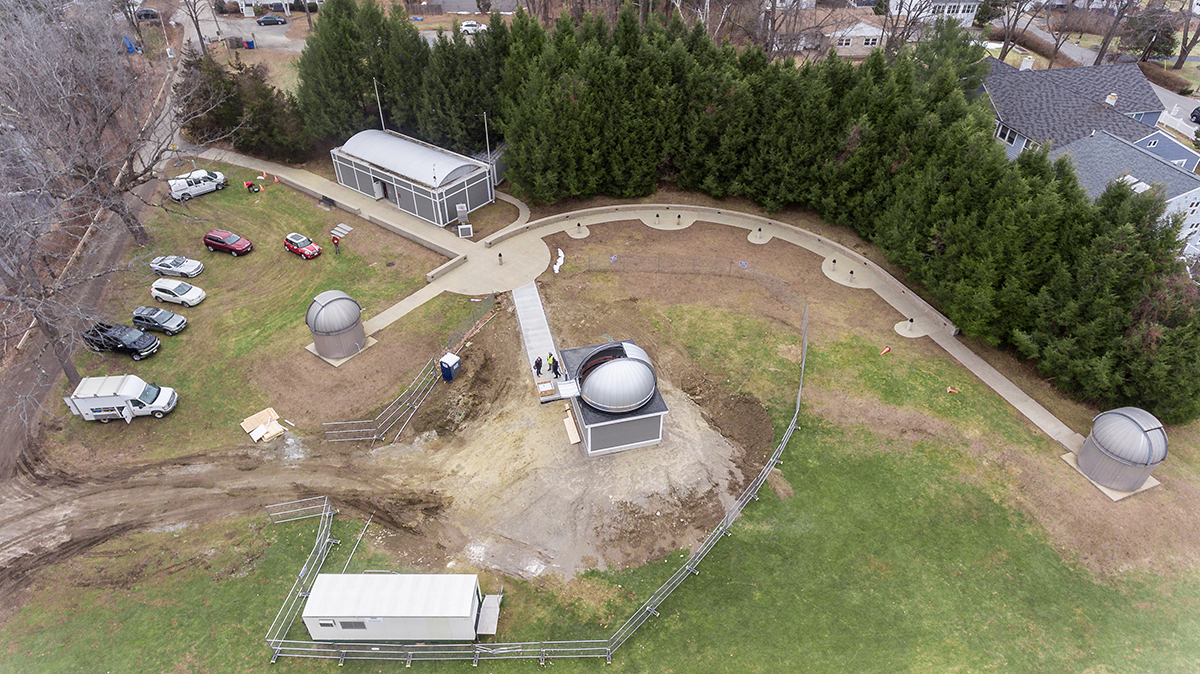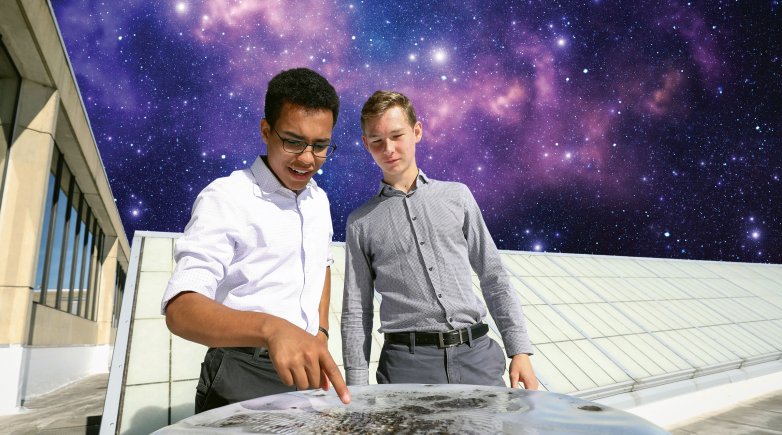New telescope a 'game-changer'
Grainger Observatory's newest arrival capable of seeing objects billions of light years away.
A construction worker guides a new, 1500-pound telescope into a dome at Grainger Observatory.
Exeter’s astronomy program is taking a giant leap with the addition of its most powerful telescope yet — one capable of capturing the faint light of objects billions of light years away.
“This is a big telescope,” says Science Instructor and Grainger Observatory Director John Blackwell. “I’ve installed several hundred telescopes and while some of them have been really big, this is the first one that requires a crane.”
Weighing in at 1,500 pounds, the fully automatic scope, housed under a new, 16-foot dome, features an interior mirror measuring 0.7 meter in diameter and more than 2 meters in length. It was dropped into place this week.

“The technology brings to use some interesting capacities,” Blackwell says. “We’ll be able to see finer detail in small objects that we haven’t been able to see before.
“Most people are familiar with telescopes that have an eyepiece that you look through and you say, ‘Whoa, look at that! Saturn!’” Blackwell adds. This one is different. It doesn’t have an eyepiece. Instead, Blackwell explains, the telescope sports two ports. One port will go to a camera outfitted with various filters to capture images of stars, nebulosity and galaxies. The other port will go to a 10-meter-long fiber optic cable connected to a little black box, a digital spectrograph. The spectrograph takes a pinpoint of light and stretches it out into different colors.
“That’s the game changer,” Blackwell says. “[Spectroscopy] enables us to see the chemical composition of the object, how fast the object is spinning, what the temperature of the object is, the strength of its magnetic field,” Blackwell says. Turns out, to get that level of detail you need a really large telescope that collects a lot of light. “The larger the telescope, the bigger the light bucket,” Blackwell says.
The new telescope will be “driven” by computer automation — a development introduced during Blackwell’s 15-year tenure. “We use the computer now to tell the telescope to ‘Go to [the star] Capella,’ and it does it automatically,” Blackwell says. This means students can focus on the actual computer data in the classroom and analyze it in very close to real time. “We’re giving the students a flavor for what being an astronomer is really like nowadays,” Blackwell says.

Expanding the program
The Grainger Observatory opened on the south side of campus in October 1989 thanks to generous donations from the Grainger Foundation. “When the observatory was built,” Blackwell says, “it brought in a whole different realm of seriousness to the science.” The original facility included two domed observatories outfitted with large telescopes and an adjacent Chart House with a classroom, library and a darkroom to develop images from film.
In 2002, a third dome with a robotic telescope was erected to capture data over longer periods of time and, in 2006, the Chart House darkroom was converted into a fully digital Harkness classroom. “Students began looking at variable stars and collecting data on stars that change — noting how some stars pulsate, others spin and some have spots that cause them to change their brightness,” says Blackwell, who was appointed director of the Grainger Observatory in 2004. “Digital data gives us a better sense of what’s happening up there in terms of the seasons, our sun’s variability, the fact that there are eclipse and things like this, which can be numerically predicated using a lot of math.”

As computers evolved in the early ‘90s, numerical data was able to be collected more quickly. By 2010, the data sets were gigabyte-sized. “No one blinks an eye at a gigabyte now, your cell phone has 250 gigabytes of storage on it,” Blackwell says, “but they’re actually building telescopes now that are going to collect on the order of four or five petabytes per night. That’s big data.” The present observatory collects five or six gigabytes in a one-hour class. “Every clear night, we’re gathering data that is parsed and processed here in the classroom using our computers,” Blackwell says.
The observatory shares its data with other schools and universities as well as with amateurs and professionals in groups like the American Association of Variable Star Observers. “We’ve had people use the telescope as far away as New Zealand,” Blackwell says. “They were collecting data for a star that’s only visible to the northern hemisphere. … they can control our telescope remotely, collect the data and download it.”
— Jennifer Wagner


